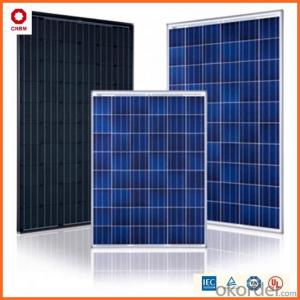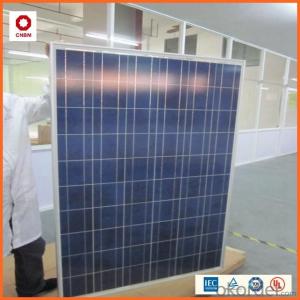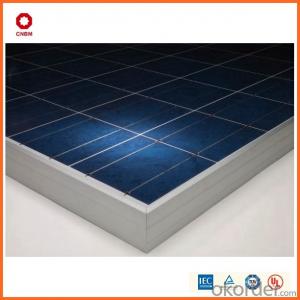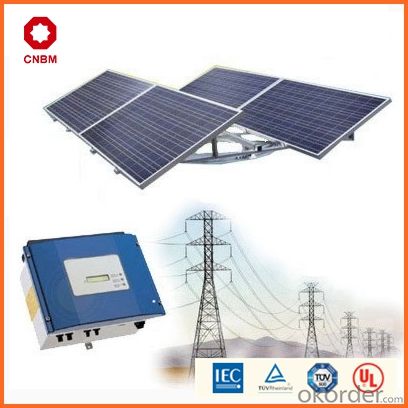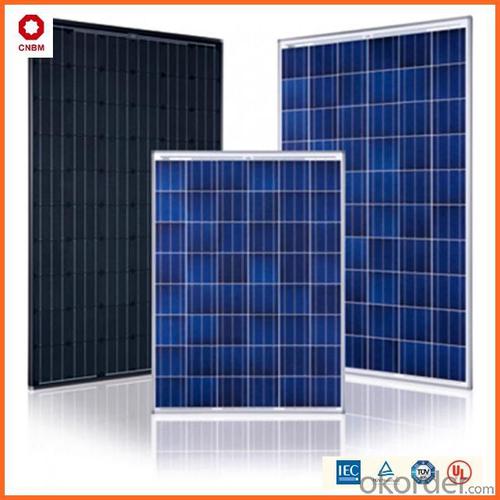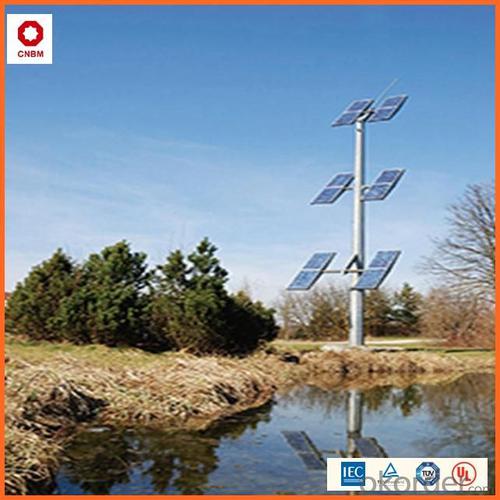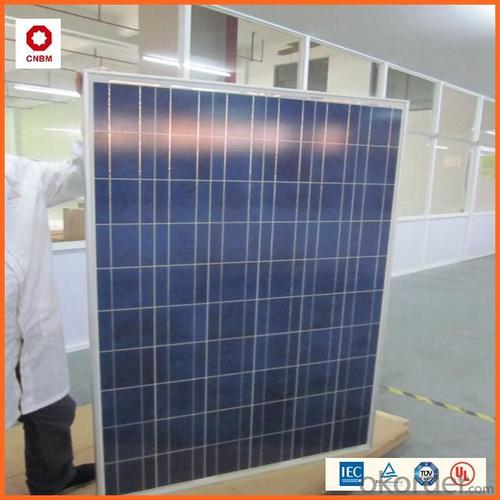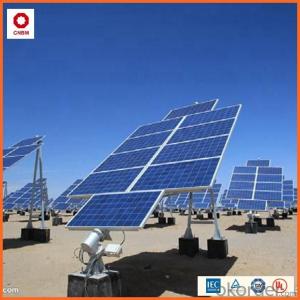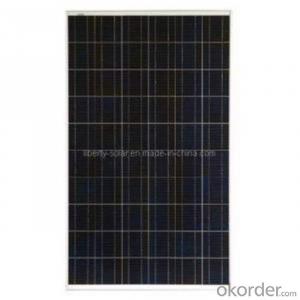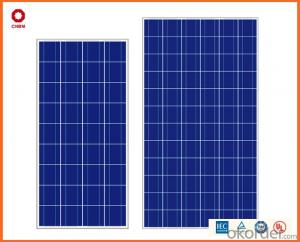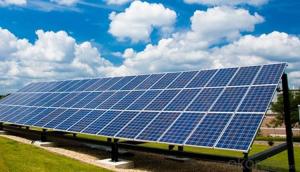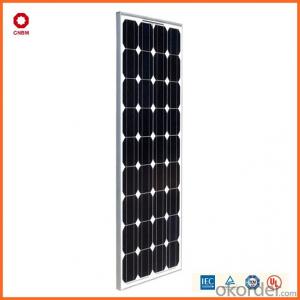BP Solar Energy Systems 70w Poly Small Solar Panels - Stocked with Good Quality
- Loading Port:
- China main port
- Payment Terms:
- TT OR LC
- Min Order Qty:
- 1 watt
- Supply Capability:
- 10000000 watt/month
OKorder Service Pledge
OKorder Financial Service
You Might Also Like
Specification
Hot Sale !!! Quality and Safety of Small Poly Solar Panel 25~85w
1. Rigorous quality control meets the highest international standards.
2. High-transmissivity low-iron tempered glass, strong aluminium frame.
3. Using UV-resistant silicon.
4. IS09001/14001/CE/TUV/UL
Warranties of Small Poly Solar Panel 25~85w
1. 10 years limited product warranty
2. 15 years at 90% of the minimal rated power output
3. 25 years at 80% of the minimal rated power output
Specification
Characteristics of Poly solar panels CNBM (25-85W) | |||||
Max Power Voltage Vmp(V) | 30.3 | 30.8 | 31.1 | 31.4 | 31.85 |
Max Power Current Imp(A) | 7.60 | 7.64 | 7.73 | 7.81 | 7.85 |
Open Circuit Voltage Voc(V) | 36.1 | 36.6 | 37 | 37.3 | 37.68 |
Short Circuit Current Isc(A) | 8.50 | 8.55 | 8.65 | 8.75 | 8.85 |
Max Power Pm(W) | 230W | 235W | 240W | 245W | 250W |
Temperature Coefficient of Cells Poly solar panels CNBM (25-85W) | |
NOCT | 45± 2 |
Temperature Coeffucients of Isc | 0.0492 |
Temperature Coeffucients of Voc | -0.3374 |
Temperature Coeffucients of Voc | -0.4677 |
Mechanical Data of Poly solar panels CNBM (25-85W) | |
Dimension | 1638 × 982 × 40 mm |
Weight | 19.5 kg |
No. of Cells and Connections | 60 (6 ×10) |
Tolerance | 0 ~ + 5 W |
Cell | Monocrystalline Cell 156 × 156 mm |
Packing | 624 Pcs/40ft(H) Container |
Limits of Poly solar panels CNBM (25-85W) | |
Operating Temperature | -40 to +85 |
Storage Temperature | -40 to +85 |
Max System Voltage | 1000VDC(IEC) / 600VDC(UL) |
Features of our products:
• High conversion efficiency mono/poly-crystalline amorphous silicon solar cells
• Modules incorporate high performance bypass diodes to minimize the power drop caused by shading
• High transmittance, low-iron tempered glass
• High performance EVA encapsulant to prevent destroying and water.
• AI frame: without screw, corner connection. 8 holes on the frame can be installed easily
• Good performance of preventing from atrocious weather such as wind and hails
• Certifications: CE IEC TUV VDE UL, Class I
• 10 years 90% power output warranty

Shipping of Small Poly Solar Panel 25~85w
By Sea | Delivery from Shanghai or Ningbo seaport |
By Air | Departure from Shanghai Pudong Airport |
By Express | Post by DHL, EMS, UPS, TNT. |
- Q: Can solar energy systems be used in developing countries without access to reliable electricity?
- Yes, solar energy systems can be used in developing countries without access to reliable electricity. Solar power is a sustainable and renewable energy source that can be harnessed to provide electricity in areas where grid connectivity is limited or non-existent. By installing solar panels and utilizing energy storage systems, developing countries can generate their own clean and affordable electricity, reducing dependence on fossil fuels and improving the quality of life for their communities. Additionally, solar energy systems are relatively easy to install, require minimal maintenance, and have a long lifespan, making them a viable option for remote and rural areas in developing countries.
- Q: Can solar energy systems be used in areas with limited access to solar energy system financing options?
- Yes, solar energy systems can still be used in areas with limited access to solar energy system financing options. There are alternative financing options available such as leasing or power purchase agreements (PPAs) where the upfront costs are covered by third-party investors or companies. Additionally, government incentives and grants can help make solar energy systems more affordable in these areas.
- Q: Can solar energy systems be installed in apartments or condominiums?
- Yes, solar energy systems can be installed in apartments or condominiums. However, the feasibility and process may vary depending on factors such as building structure, ownership arrangements, and available space for solar panel installation. In some cases, shared or community solar projects can be established to provide solar energy to multiple units within the building.
- Q: Can solar energy systems be used in areas with limited government support?
- Yes, solar energy systems can be used in areas with limited government support. In fact, solar energy often becomes a preferred option in such areas due to its decentralized nature and cost-effectiveness. Off-grid solar systems can be installed to provide electricity to homes, businesses, and communities without relying on government infrastructure. Additionally, community-led initiatives, private investments, and international aid programs can help facilitate the adoption of solar energy systems in regions with limited government support.
- Q: Can solar energy systems be used for powering electric train systems?
- Yes, solar energy systems can be used to power electric train systems. Solar energy can be converted into electricity using photovoltaic (PV) panels or concentrated solar power (CSP) systems. This electricity can then be used to power the traction motors of electric trains, eliminating the need for traditional fossil fuel-powered engines. The feasibility of using solar energy for train systems depends on various factors such as the availability of sunlight, the size and efficiency of the solar panels, and the energy requirements of the trains. For example, in regions with abundant sunlight, such as deserts, solar energy can be harnessed effectively to power train systems. There are already several successful examples of solar-powered train systems around the world. For instance, the Byron Bay Train in Australia is powered entirely by a solar train system, relying on a combination of solar panels and battery storage. In addition, a section of the railway line in India is powered by solar energy, providing clean and sustainable transportation. Implementing solar energy systems for powering electric trains can bring numerous benefits. First and foremost, it reduces the dependence on fossil fuels, decreasing greenhouse gas emissions and contributing to combating climate change. Solar energy is a renewable source, so it offers a sustainable and long-term solution for powering train systems. Moreover, solar-powered trains can help reduce operating costs as they require less maintenance and are not subject to fluctuating fuel prices. However, there are also some challenges associated with using solar energy for train systems. The initial installation cost of solar panels and related infrastructure can be high, although the long-term operational savings can outweigh this investment. Additionally, the intermittent nature of sunlight can pose a challenge, especially during cloudy or nighttime conditions. This can be addressed by utilizing battery storage systems, which store excess energy generated during peak sunlight hours and release it when needed. In conclusion, solar energy systems can indeed be used for powering electric train systems. With advancements in solar technology and the increasing need for sustainable transportation, solar-powered trains have the potential to play a significant role in the future of rail transportation, promoting clean energy and reducing environmental impacts.
- Q: Can solar energy systems be used in commercial buildings?
- Yes, solar energy systems can definitely be used in commercial buildings. In fact, they are increasingly being adopted by businesses worldwide as a sustainable and cost-effective solution for meeting their energy needs. Solar panels can be installed on the rooftops or facades of commercial buildings, harnessing the power of the sun to generate electricity. This clean and renewable energy source not only helps reduce greenhouse gas emissions but also provides long-term energy savings for businesses.
- Q: Can solar energy systems be used during power outages?
- Yes, solar energy systems can be used during power outages. However, it depends on the type of solar energy system being used. Grid-tied solar systems without battery storage are designed to shut down during power outages to prevent electricity from being fed back into the grid and endangering utility workers. On the other hand, solar energy systems with battery storage, commonly known as solar-plus-storage systems, can provide electricity during power outages by utilizing the energy stored in the batteries.
- Q: Can solar energy systems be used in areas with limited access to transportation?
- Yes, solar energy systems can be used in areas with limited access to transportation. Solar energy systems are highly versatile and can be installed in remote locations where transportation infrastructure may be limited or non-existent. These systems can be designed to function independently of the grid, providing a reliable source of electricity for communities and individuals in remote areas. Additionally, advancements in solar technology have led to the development of smaller and more portable solar systems, making it easier to transport and install them in areas with limited access to transportation.
- Q: Can solar energy be used to power my entire home?
- Your entire home can be powered by solar energy. Photovoltaic (PV) panels, also known as solar panels, convert sunlight into electricity. This electricity can then be used to power all the electrical appliances and systems in your home. If you install an adequate number of solar panels on your roof or in your yard, you can generate enough electricity to meet your household's energy requirements. However, the amount of solar energy your home can produce depends on various factors such as the size and orientation of your roof, the amount of sunlight in your area, and your energy consumption habits. To ensure that solar energy can power your entire home, you may need to install a battery storage system. This system will store any excess energy generated during the day for use at night or on cloudy days. Additionally, to maximize the benefits of solar energy and reduce reliance on the grid, you should make energy-efficient choices and decrease your overall energy consumption.
- Q: How does the color of solar panels affect energy production?
- The energy production of solar panels is not significantly affected by their color. The color of solar panels mainly depends on the materials used in their construction, such as silicon or thin film. These materials have different absorption properties, but they are designed to efficiently absorb sunlight and convert it into electricity regardless of the color. However, it is important to note that darker-colored solar panels may absorb slightly more heat from the sun compared to lighter-colored ones. This can result in a slight reduction in overall efficiency as the panel's temperature increases. To address this issue, manufacturers often employ various cooling techniques, such as elevating the panels or incorporating cooling systems, to maintain optimum operating temperatures. In the end, the primary factor that influences energy production in solar panels is the amount and intensity of sunlight they receive, rather than their color. Factors such as the installation angle, geographical location, shading, and cleanliness of the panels have a much greater impact on their energy output.
Send your message to us
BP Solar Energy Systems 70w Poly Small Solar Panels - Stocked with Good Quality
- Loading Port:
- China main port
- Payment Terms:
- TT OR LC
- Min Order Qty:
- 1 watt
- Supply Capability:
- 10000000 watt/month
OKorder Service Pledge
OKorder Financial Service
Similar products
Hot products
Hot Searches
Related keywords

